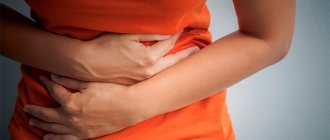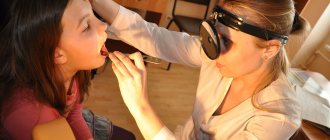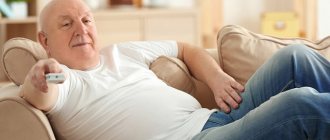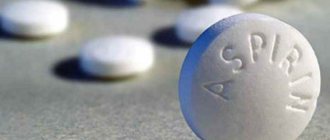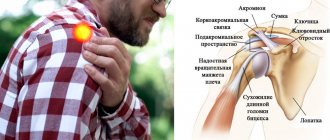Epilepsy (falling disease) is a fairly common pathology of the nervous system, the main manifestation of which is an epileptic seizure. An epileptic attack can be quite frightening and is characterized by loss of consciousness, the onset of seizures and, in some isolated cases, foam at the mouth. Sometimes it may take on a reddish tint.
To provide first aid, you do not need to have specific medical knowledge or skills. In most cases, the seizure goes away on its own; it is not necessary to call an ambulance. As a rule, a person who knows about his problems carries a note with the numbers of his relatives, friends, and information about himself, which may be useful to those who happen to be close to him.
However, people who want to help the victim should carefully perform first aid procedures, since the wrong procedure can cause serious harm to the patient.
People suffering from epilepsy should be regularly examined by a doctor, as the correct prescription of medications and constant monitoring of the disease reduce the risk of epileptic seizures. The Yusupov Hospital provides medical services from the best neurologists and epileptologists in the capital, who will select individual treatment for each patient.
Epilepsy and epileptic seizures are of completely different types and can manifest themselves in different ways. However, despite the variety, the attack always occurs suddenly. There are some signs by which you can determine an impending seizure, but this is not always possible. It is important for the person providing assistance to maintain inner calm and confidently carry out all necessary actions, since a person’s life is at stake.
Signs of an epileptic seizure
The mechanics of the occurrence of epilepsy has not been precisely clarified at the moment, but it is known that seizures begin against the background of intense stimulation of areas of the cerebral cortex due to increased electrical activity of nerve endings.
Signs of an attack, as a rule, vary from person to person, but there is a certain set of symptoms that helps determine the stage of the attack and immediately proceed to first aid procedures. Such crises cause great pain and stress to the patient, so after the seizure the victim must be handled very carefully.
Signs of an epileptic seizure include:
- sudden loss of balance, falling to the ground;
- loss of consciousness;
- nausea, vomiting;
- heavy breathing;
- muscle hypertonicity;
- inseparable loud shouting;
- a sharp increase in blood pressure;
- blood from the nose;
- involuntary throwing of the head back;
- “glass eyes”;
- increased salivation, sometimes with foam;
- loss of sense of reality of the surrounding world;
- disruption of the thinking process, misunderstanding of words or shouts of strangers;
- involuntary bowel movements or urination;
- local convulsions or convulsions of the whole body;
- numbness of the limbs;
- pupils stop responding to light;
- bluishness or redness of the face and other skin;
- very rapid pulse or its strong decrease;
- convulsions.
It is quite difficult to prevent an attack, but by certain indicators you can understand its approach and take the patient to a safe place.
Expert opinion
Author: Olga Vladimirovna Boyko Neurologist, Doctor of Medical Sciences
Doctors consider epilepsy one of the most dangerous neurological pathologies. This is because a seizure can occur at any time. This increases the risk of injury. Therefore, epilepsy requires timely diagnosis and treatment. The disease occupies a leading place in the structure of disability. According to statistics, 30% of patients are disabled people of group 1 or 2. In order to reduce the risk of injury during an epileptic attack, doctors have developed special first aid recommendations. Anyone can familiarize themselves with them.Doctors at the Yusupov Hospital diagnose and treat various forms of epilepsy. Modern European CT, MRI and EEG equipment are used for examination. This medical equipment allows you to quickly determine the localization of the pathological focus. The quality of treatment depends on the accuracy of the research. An individual therapeutic plan is drawn up by experienced neurologists and epileptologists. If you follow medical recommendations for the treatment and prevention of epileptic seizures, 60-70% of patients at the Yusupov Hospital achieve long-term remission.
Consequences of sleep disorders
People suffering from sleep disorders often mistakenly perceive their condition as an independent problem that can be solved with the help of medications. And they often don’t even realize that many chronic diseases or organ dysfunctions are directly related to insomnia. Thus, it has already been established that diseases of the cardiovascular system, depression, and metabolic disorders are closely related to low quality sleep or its short duration. Chronic insomnia not only contributes to the deterioration of a person’s well-being, but can also lead to the development of serious diseases.
One of the most insidious complications of acute insomnia is its transition to a chronic form. This is often due to the so-called pathological circle. A person who suffers from sleep disorders, even after eliminating the causes of this condition, acquires a fear of insomnia. He expects in advance that the next night will bring him further suffering and thus puts himself in a state that prevents him from falling asleep. Thus, over and over again his worst expectations are justified, and insomnia becomes chronic. In such cases, the doctor may recommend taking a sedative for sleep disturbances that recur for several days in a row or regularly under certain circumstances. Treatment of chronic insomnia should include comprehensive measures: from eliminating the cause of sleep disturbances to treating complications of this condition.
Important!
Despite resolution of a stressful event, insomnia can sometimes persist and lower a person's stress threshold. Even acute, seemingly adaptive insomnia in some cases requires mandatory treatment to prevent its transition to a chronic form, the development of disorders, and also to improve the patient’s quality of life.
Causes of occurrence and development
There are no immediate causes that can cause an epileptic seizure, but there are a number of risk factors that, under certain circumstances, can trigger an epileptic seizure. Risk factors can be either congenital or acquired.
Hereditary predisposition involves the special functioning of neurons and their tendency to spontaneous excitation. This feature can be passed on from generation to generation, but does not always manifest itself. Epilepsy with a hereditary predisposition can develop in the case of acquired provoking factors, namely:
- with cerebral hemorrhage or other cerebrovascular accidents;
- after traumatic brain injury;
- as a result of prolonged alcoholism, use of narcotic and psychotropic drugs, severe stress;
- with meningitis, encephalitis;
- for birth injuries;
- with a brain abscess or stroke;
- in the presence of aneurysms, cysts or adhesions in the brain.
Factors influencing the occurrence of an epileptic seizure are:
- poor sleep patterns;
- drinking alcohol, caffeine, taking any amount of drugs, antidepressants not prescribed by a doctor;
- refusal to take medications or undergo therapy;
- smoking;
- stress;
- changes in hormonal levels due to certain diseases;
- menstruation in women.
It is very important to understand: if an attack has begun, in no case should you give the patient any medications, especially those that are not prescribed by the attending physician. In such a situation, the process has already started, and any pills can only do harm. An attack, if it lasts no more than three minutes, should simply be controlled and not try to bring the person to his senses. However, if the attack lasts longer, it is important to call a medical team.
Doctors at the Yusupov Hospital work around the clock, so in case of complications after epileptic syndrome, you should immediately consult a doctor to avoid disastrous consequences. We will help our patients get out of any difficult situation.
Consequences of co-administration
With prolonged abuse of alcohol-containing products, ethanol constantly enters the body. The liver does not have time to process toxic metabolites, and acetaldehyde begins to accumulate. Phenobarbital activates the synthesis of liver enzymes, which are necessary for the breakdown of ethyl alcohol to acetaldehyde.
If you take Corvalol when you come out of binge drinking, the duration of the detoxification phase increases. The symptoms of a hangover do appear milder, but abstinence lasts longer. In addition to pleasant relaxation, sound sleep and apathy, all detoxification processes slow down. Toxins are not eliminated, the hangover lingers, and liver dysfunction develops.
Provoking factors
Often, epileptic seizures occur from various “triggers” - situations that provoke an attack. This could be a bright flashing picture, a sequence of sharp sounds. There are cases where overly bright cartoon screensavers caused a negative reaction in children. The danger comes from flashing, rapidly changing images that overload sensitive systems.
If the attack is caused by just such a factor, then it is better to get rid of it at the first opportunity: turn off the TV, turn down the volume. After the attack ends, ensure that you stay in a quiet room with dim lighting. If you do not get rid of the triggers, they can provoke a series of repeated attacks, which will not be easy for the body to survive.
How to spot an impending seizure
It is impossible to prevent an epileptic seizure, but you can warn others about it in advance or ask for help if you suffer from epilepsy and feel an attack coming.
First comes the tonic phase, its manifestations are convulsions, loss of control over the situation, increased salivation, etc. As a rule, due to hypertonicity of the muscles, the legs remain straight, and the arms involuntarily bend at the elbows. Breathing becomes difficult and may stop for several seconds at regular intervals. Asphyxia causes the skin to turn blue, especially the lips.
The tonic phase lasts about 30-45 seconds, after which the clonic phase begins. The clonic period is characterized by alternating muscle tension and relaxation - convulsions and convulsive states. During this period, the person twitches randomly, bends in unnatural positions, but does not come to his senses. The patient may spontaneously bite his lips or tongue, which causes blood to appear in the saliva. During the period of complete muscle relaxation, the internal sphincters also weaken, which can cause bowel or bladder emptying.
A few minutes before the onset of epileptic syndrome, the patient may suffer from restlessness, increased anxiety, and may experience hallucinations of various types. There are several types of pre-epileptic conditions, so-called auras:
- speech aura – disturbance of sensory or motor functions;
- mental aura - a sudden, unconditional feeling of sadness, melancholy, increased anxiety, panic attacks, or vice versa, a sharp surge of energy and joy;
- vegetative aura – dysfunction of the executive organs: blood vessels, secretion glands and muscles;
- sensitive aura - distortions in the sensations of external stimuli, a feeling of extreme cold or heat, a disturbance in the sensation of one’s body;
- sensory aura - changes in auditory, olfactory and visual sensations.
It is important not to panic if you notice similar symptoms in yourself or someone nearby. You should calmly warn others about this and secure your location by removing all dangerous piercing or cutting objects, and also move to a safe place where you can lie down.
The round-the-clock reception of doctors at the Yusupov Hospital will protect patients in the clinic from complications after an epileptic seizure. We pay close attention to each of our visitors, guaranteeing high-quality treatment results.
Make an appointment
First aid algorithm
First aid for an epileptic seizure is extremely important, since incorrect actions can not only not help the victim, but also worsen the situation. If someone nearby begins to show symptoms of an impending seizure, you should prepare:
- find out whether the person has had epileptic seizures before;
- If a person has epilepsy, he must immediately take the pills prescribed by the doctor to block the seizure. At the same time, people nearby should not give the patient tablets of unknown origin;
- secure your location, move to a safe, uninhabited place;
- if the situation occurs indoors, it is necessary to open windows or doors to ensure the flow of fresh air;
- the patient's head should be placed on one side to avoid choking on saliva or vomit;
- provide the patient with a fall on a soft surface, place an additional soft object under the head so that the head is higher than the body;
- remove all potentially traumatic objects;
- remove belts, necklaces, hats and all things that can squeeze, cause discomfort and make breathing difficult.
What to do if an epileptic seizure has already begun?
To begin with, it is worth remembering that panic and loss of self-control are factors due to which help during an epileptic seizure may be incorrect. You need to calm down, take a breath and begin to perform the following algorithm of actions:
- record the time of onset of the attack;
- if possible, place the patient with a rolled up soft cloth or any non-hard object between the jaws to avoid biting the lips or tongue;
- record the time of the end of the attack, this will help in the future when making a diagnosis.
It is important to stay close by until the symptoms go away completely. If there is no direct threat to life and health, then it is better not to actively interfere with the course of events. Excessive activity from those who want to help can often harm further well-being.
There are a number of erroneous actions that can cause significant harm to the victim.
Danger and side effects
The instructions indicate that during treatment with a sedative drug it is prohibited to drink alcohol-containing drinks. The active ingredients are not compatible with ethanol. With the simultaneous presence of alcohol and barbituric acid in the body, the risk of dangerous pathologies increases.
External manifestations of poisoning with barbiturate and alcohol-containing drinks are shallow breathing, severe headache, and loss of coordination. Drowsiness or insomnia develops, inhibition of reactions or increased excitability is observed, and blood pressure sharply decreases.
Negative consequences:
- Liver dysfunction. The medication increases the hepatoxic effects of ethanol, the liver stops purifying the blood of toxic substances.
- Increased mental disorders. A sedative in combination with alcoholic depression leads to the appearance of suicidal thoughts.
- Hallucinations. Phenobarbital in combination with alcoholic beverages leads to the development of alcoholic delirium. The pathology is accompanied by false visions, thinking disorders, and fever.
- Fainting. When taking sleeping pills after prolonged drinking, blood pressure can drop sharply and the heart rate slows.
- Respiratory depression. Barbituric acid enhances the inhibitory effect of ethyl alcohol on the respiratory centers of the brain. In case of an overdose or a high concentration of hydroxyethane in the blood, death may occur due to respiratory arrest.
With prolonged therapy, bromine accumulates in the body, which leads to disruptions in the functioning of the central nervous system. Manifestations: unsteady gait, slow speech, memory problems; colitis and constipation develop against the background of slower peristalsis. Erectile functions are impaired in men.
When using sleeping pills for 2 weeks, dependence is formed. The positive effect of the drug decreases, sleep is disturbed. Withdrawal syndrome is accompanied by withdrawal symptoms; withdrawal symptoms are superimposed on the symptoms of a hangover.
With a daily dosage of 150 drops, severe poisoning occurs. If you drink 50–100 ml of alcohol after 100 drops of the medicine, death can occur.
Severe poisoning is indicated by disturbances in breathing and heart rhythm, the skin of the face and body acquires a bluish tint, which indicates the rapid development of heart failure. If dangerous symptoms appear, you must urgently call an ambulance. Without medical help, the likelihood of cardiac arrest and death of the patient is quite high.
What not to do
Doctors talk about several actions that should never be taken if you want to help.
Firstly, under no circumstances should you leave a person alone. During the tonic phase of seizures, the patient may stop breathing due to spasm of the airways. During the clonic phase, hitting your head on something.
Secondly, it is strictly contraindicated to try to restrain a person who is convulsing. The muscles are overstrained due to contractions, and excessive pressure on the limbs or spine will not lead to anything good, but will only increase the risk of damage to the muscle fibers or joints when it comes to the limbs.
Thirdly, there is a well-established stereotype that an epileptic needs to insert something between his teeth. Usually a spoon or keys are mentioned as a suitable item. But the facial muscles are no less tense than others, so an attempt to unclench the jaws can damage the teeth and result in a fracture of the lower jaw. This measure is also fraught with injury for those who want to provide first aid: the jaws are clenched with such force that the epileptic can bite off the finger with which they want to open his mouth.
The risk that an epileptic will bite off his own tongue is a harmful lie. This is a muscle like all the others. When she is in a state of hypertonicity, the likelihood of biting or sticking her tongue tends to zero.
Fourthly, it is very important not to give any medications to an epileptic, even if some medications are found in the patient’s pockets or bag. When under stress, it is easy to miscalculate the dosage, including that of a specially prescribed drug. You can also allow a situation in which the pill ends up in the wrong throat. If the medicine does harm, the person who wants to help will face criminal liability, even if he acted with the best intentions.
At the end of the attack, especially if none have been observed before, the patient should be taken to the clinic for further examination. Qualified doctors at the Yusupov Hospital are ready to provide assistance at any time of the day. Our doctors treat each patient responsibly and attentively, carry out all manipulations and examinations based on individual indicators.
Make an appointment
Heart hurts after stress: how to support the body and avoid problems
Heart hurts after stress: how to support the body and avoid problems
Stress never leaves its mark on health, and nervous overstrain can manifest itself under the guise of a variety of diseases. But one of the most common symptoms is heart pain, which makes you suspect the most serious illnesses, worry and fuel stress even more. How to recognize the stressful nature of pain and what to do to get rid of it?
Mechanism of pain
There is not a single organ that does not suffer from stress. But most often the cardiovascular system comes under attack, especially if the stress factor is constantly present. The strong emotions that a person experiences under stress (grief, anger, fear, etc.) are perceived by the brain as a threat, and it gives the command to mobilize all resources, which leads to the release of adrenaline, increased blood pressure, and increased heart rate. The load on the heart muscle (myocardium) increases, and if stressful events are repeated regularly or a person constantly lives in a state of stress, the heart and other organs begin to work to the limit of their capabilities. Naturally, the body's resources are limited, sooner or later a person begins to experience physical manifestations of stress. One of them is pain in the heart, which signals the need to pay attention to your health condition.
Symptoms
The most common symptoms are:
Painful sensations. The pain can have varying intensity and be stabbing, aching and other in nature. Its manifestation is not associated with physical activity.
Increased anxiety of a person, constant feeling of danger. This symptom can manifest itself in the form of fear for one’s life, for the well-being of loved ones, as anxiety about any natural or man-made disasters, etc. But all these feelings have one thing in common: they are irrational and arise without objective reasons.
Unexplained fatigue that does not go away after proper rest. Constant drowsiness and problems with sleep, lack of feeling of freshness and energy even after a long rest - these signs indicate that the body is simply exhausted.
Shortness of breath, feeling of lack of air. A feeling of lack of air or heaviness in the chest, which does not allow you to take a full breath, can appear both with pain in the heart and outside of it. This condition passes relatively quickly, but can be very frightening.
Drawing pain in the chest. Pain in the heart of a psychogenic nature is usually present in the form of a pulling or pressing feeling on the left side of the chest. The intensity of this symptom can vary from barely perceptible tension to severe pain.
Strong emotional stress. During periods of excessive emotional stress, it is difficult for a person to objectively judge his condition. But this is noticeable in psychomotor manifestations: tightly clenched fists or jaw, the need to tap a rhythm with the foot, bend and unbend a paper clip, etc.
Improvement immediately after getting rid of the stressor. After stabilization of the emotional state, the symptoms usually reduce their intensity, and when the stress factor is eliminated, they disappear without a trace.
Features of psychogenic cardialgia
| Evaluation criterion | Psychogenic cardialgia |
| Floor | Female |
| Age | Under 40 years old |
| Reasons for the development of an attack | Emotional stress (anxiety, fear, anger, etc.), acute or chronic stress, an attack develops at rest |
| Nature of pain | Dull, aching, pressing, stabbing, does not change with breathing movements |
| Pain intensity | Gradually increases and gradually disappears |
| Localization of pain | It is felt in the left half of the chest, the brightest pain zone can be accurately determined by the patient, but the pain can also be blurred, without clear boundaries |
| Duration of pain | Can last for several hours or even days, sometimes there are serial attacks in which the total duration of pain is several days, but during this time the attacks stop and resume again |
| Periodicity | Pain most often appears in the morning and under the influence of stress factors |
| Response to physical activity | Chest pain appears regardless of the degree of physical activity at the time of the attack. Often the pain is relieved or completely disappears with physical activity, which acts as a distraction for psychogenic cardialgia. |
| Behavior during an attack | A person behaves emotionally: excited, describes his condition in vivid colors, complains of pain, may rush around in bed, trying to find a more comfortable position, etc. |
Treatment
If you experience any pain in the heart, you should immediately consult a doctor. As part of a comprehensive examination, an ECG is required - a study without which it is impossible to make an accurate diagnosis. Based on the fact that no abnormalities were detected in the heart, conclusions are drawn about the psychogenic nature of the pain. In this case, additional confirmation is recommended using special psychological testing that determines the severity of a person’s stressful condition and its possible causes.
In most cases, treatment is limited to taking drugs with a sedative effect and the mandatory elimination of stress factors. Taken together, this allows you to eradicate the cause of pain in the heart and break the pathological circle.
About prevention
Prevention includes:
- minimizing circumstances that provoke stress (including communication with people who project negative emotions onto others and become sources of conflict);
- the formation of a new type of behavior in which one’s own negative emotions are not suppressed, but are spoken out, discussed, or released through physical activity;
- organizing leisure time that will allow you to devote time to your hobbies, relaxing, inspiring activities (handicrafts, attending cultural events, relaxing with family in nature, etc.);
- correction of the diet towards a healthy diet with the inclusion in the menu of foods that stimulate the production of serotonin (seafood, bananas, etc.);
- organization of a healthy psychological environment (exclusion of flashy and aggressive tones in the interior with a predominance of soothing shades, soft lighting, exclusion of irritating sounds or noise, etc.);
- undergoing a course of psychotherapy if you cannot cope with internal tension on your own.
Corvalol Phyto can also be used to prevent violations. This is a combination drug whose effect is due to its ability to reduce spasms and have a calming effect. It has a natural herbal composition, which includes ethyl bromizovalerate, motherwort extract, and peppermint oil.
How to increase stress resistance and become a stress-resistant person
There is stress in every person's life. It can take many different forms and have different sources. But you should always remember that stress is a protective reaction of the body, which works under extreme loads, and frequently occurring stressful situations inevitably affect the general state of health. Unfortunately, it is impossible to foresee or eliminate absolutely all events that lead to excessive psycho-emotional stress. But you can increase your own level of stress tolerance.
What to do after an attack
After an epileptic seizure, the patient needs peace and rest, since during an attack the body depletes resources and needs to be replenished. Before the ambulance arrives, provide the victim with complete comfort and psychological support. Try to rid him of all irritants and remain calm.
An ambulance should be called only if the seizure lasts more than 3 minutes, or if it recurs. Professional help is also necessary if during an attack the patient injures himself, is injured or suffocates. After an epileptic attack, the following steps should be taken:
- put the patient on his side and let him rest for a few minutes;
- if the attack happened in a crowded place, ask everyone to move away to ensure psychological comfort for the victim;
- if a person involuntarily empties his bowels or bladder, try to clean the area and remove dirty clothes;
- notify the patient’s relatives or loved ones about what happened, especially if he is a minor or an elderly person;
- do not leave the patient for at least another 15-20 minutes, since normalization of the condition does not occur immediately. Transport the victim home if he wishes.
It is important to understand that even the correct implementation of first aid cannot guarantee the absence of the risk of developing side complications. Immediately after an epileptic seizure, the patient should be admitted to the neurology clinic of the Yusupov Hospital, where the best neurologists in the capital will determine the diagnosis and prescribe concomitant treatment. Examinations in the hospital are carried out using modern European equipment, which allows you to obtain the most accurate results. Our medical staff is ready to provide first aid in emergency situations throughout the day.
When to call an ambulance
To provide first aid for epilepsy, it is not always necessary to involve doctors. As a rule, attacks are fleeting. There are cases when compassionate citizens called the ambulance crew, but by the time they arrived they had already left the scene on their own.
In addition, for some, such situations happen several times a day. With such options, it is enough to know the basic principles of providing assistance, and if everything proceeds without complications, you can cope on your own.
In some situations, the help of medical specialists is vital for a patient with epilepsy.
The attack happened for the first time in my life
You cannot be sure how the body will react if it has not experienced such overexertion before. It is quite possible that epilepsy is manifesting itself right now (this can happen at any age). However, there is a danger that a seizure is a sign of some disease, the exacerbation of which requires the intervention of appropriately qualified specialists.
The victim is a child or elderly
The bodies of children and the elderly are most vulnerable to critical changes in health. Even if everything goes as normal, only doctors will be able to give an accurate conclusion regarding the condition of the body and further health risks.
Cramps in a pregnant woman
A neurological disease can be fatal to a child in the womb. If a woman is late in pregnancy, there is a risk of premature onset of labor.
There is a possibility of injury
During seizures, the patient may hit his head on a sharp corner or be injured during a fall. Even if it just seems to you that there is a risk of traumatic brain injury or any other injury, it is better to call specialists and keep the patient in place until the doctors arrive.
The patient remains unconscious for more than 10 minutes
It is important to check the patient’s clarity of consciousness after an attack, to find out whether he remembers his name or home address. If he does not regain consciousness on his own, there is no need to “help” him: hit him on the cheeks or splash water. It is also forbidden to try to bring people to their senses using such means as ammonia: any strong odors can provoke a second attack, which, compared to the one just suffered, can cause significant harm to health.
Epilepsy always carries the risk of irreversible changes in brain structures. If a person breathes but does not regain consciousness for more than ten minutes, it is important to organize professional medical assistance as soon as possible.
Make an appointment
Treatment
At the Neurology Clinic of the Yusupov Hospital, clients can count on several treatment methods. In particular, we are talking about drug therapy and neurosurgical technologies. By skillfully combining these techniques, doctors achieve a significant improvement in the condition of their patients and provide them with the most comfortable life possible with this pathology.
It should be understood that epilepsy is not a death sentence; people with this disease can live a normal life, limiting themselves to virtually nothing. To do this, you need to regularly undergo the necessary examinations, see your doctor and take prescribed medications. Doctors at the Yusupov Hospital take care of their patients, regularly ordering examinations and prescribing medications only based on the individual indicators of each patient.
Corvalol PHYTO in the treatment of sleep disorders
Corvalol PHYTO is a combination drug that contains natural herbal ingredients. For sleep disorders, this remedy can have a calming effect, reduce spasms, and also eliminate unpleasant symptoms of the cardiovascular system that are not associated with organic diseases (by slowing down the rhythm and increasing the strength of heart contractions)2. The medicine has moderate antihypertensive properties. Depending on personal preferences, you can choose the most convenient form of release of the drug and take drops or tablets for sleep disorders. The action of Corvalol PHYTO can help get rid of increased excitability and neurosis-like conditions that lead to sleep problems. Usually, tablets and drops are not addictive if you strictly follow the doctor’s instructions regarding dosage and duration of treatment. ________________
1 Vorobyova O.V., Doctor of Medical Sciences, Professor. Acute (adaptive) insomnia: a therapeutic dilemma. First Moscow State Medical University named after. I. M. Sechenov.
2 According to the instructions for medical use of Corvalol PHYTO in tablets and drops.
